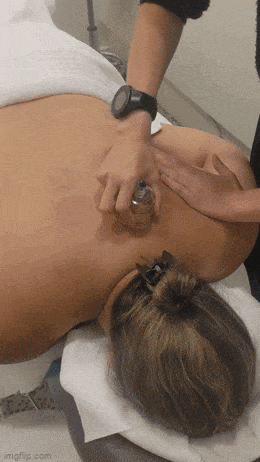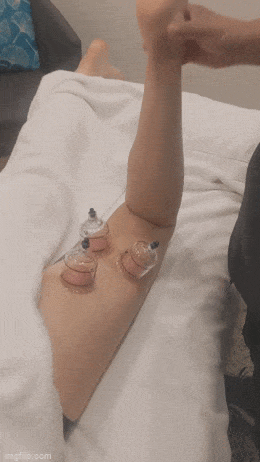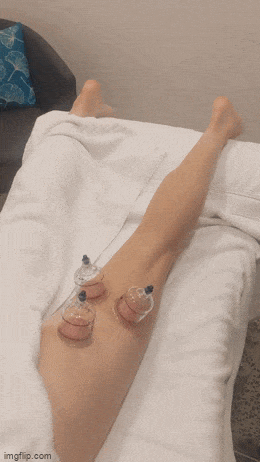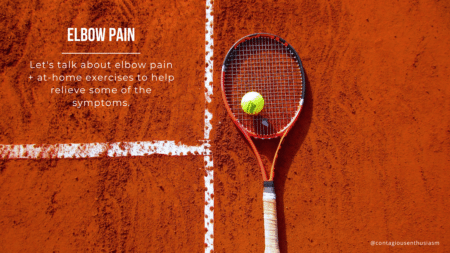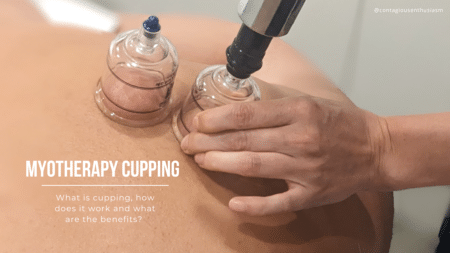What is Myotherapy Cupping?
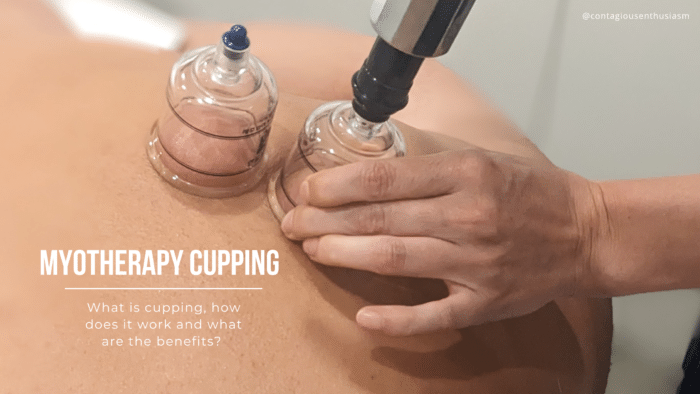
“What is cupping?” This is a question I receive almost daily. Most patients have some idea, as we have all seen footy players or people at the beach with these round marks on the body and we all know that this person has received a cupping treatment.
But what does cupping actually do? How does it work? What are the benefits? How does it feel? These are the questions that I would like to answer for you all.
Let’s start at the beginning, what is cupping?
Cuppings origins however are ancient. It’s believed to have begun in China but has been traced to Egyptian and Middle Eastern culture. It has described in ancient medical text Ebers Papyrus and may have been used as early as 1550 B.C.
Myotherapy cupping is a Western myofascial therapy. It provides a sustained and controlled stretch to the skin, superficial fascia, the muscle, and even the deep fascia. It is a relatively low risk high reward treatment; it can create dramatic change in the resting state of the tissue.
Benefits of cupping
Cupping has a powerful effect on hydration to the tissues, improving the nutrient supply and decreasing acidity. Tissue acidity often leading to pain. Cupping increases the blood flow which can have an anti-inflammatory, antioxidant effect and anti-nociceptive effect in the local tissue which can further decrease pain.
How does it work?
There are various ways a therapist may use the cups on your body.
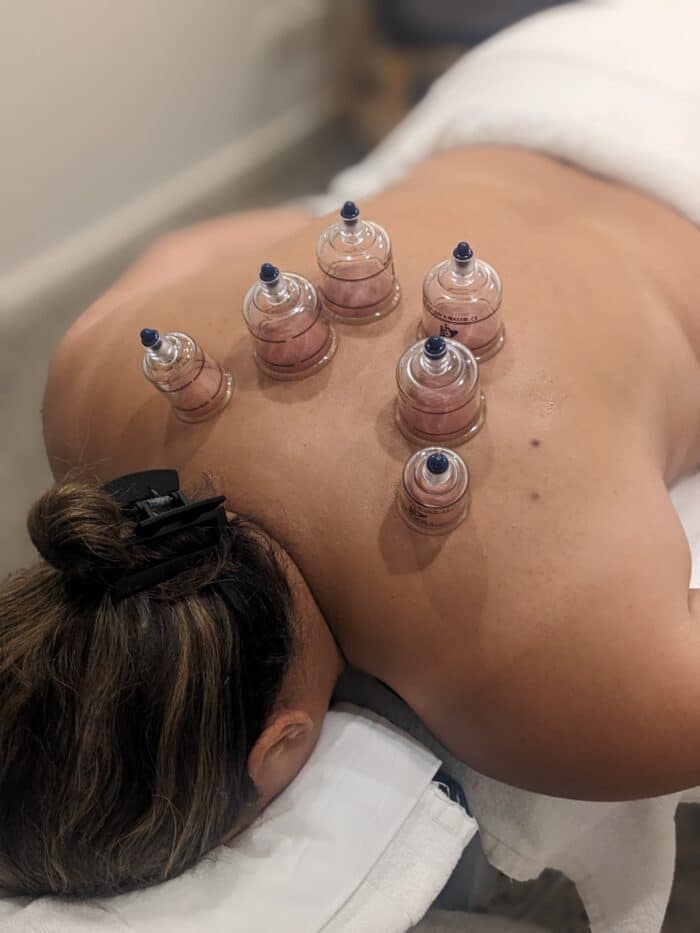
The most common being stationary – which is simply when the therapist places the cup on the body. using the vacuum suction to keep in place. They will leave them in place until the desired result has occurred in the tissue.
The therapist may also slide the cups over the skin. This helps to work the fascia underneath. Your therapist may also passively move an associated limb while the cups are in place. We even have the patients actively moving, all with the cups in place. These are more often referred to as functional cupping manoeuvre.
Cups often don’t need to be applied for very long to have dramatic effect. 5-15mins at most, so often it is just one element to your Myotherapy treatment.
Does it hurt?
Ultimately no but pain is very personal. Majority of people feel a little bit of discomfort when the cups are first applied sort of like a pull or pinch. After a few minutes most people will tend to forget that the cups are even there. Your therapist will always listen to you and your boundaries and if the cups are too uncomfortable the suction can easily be lessened, or simply removed.
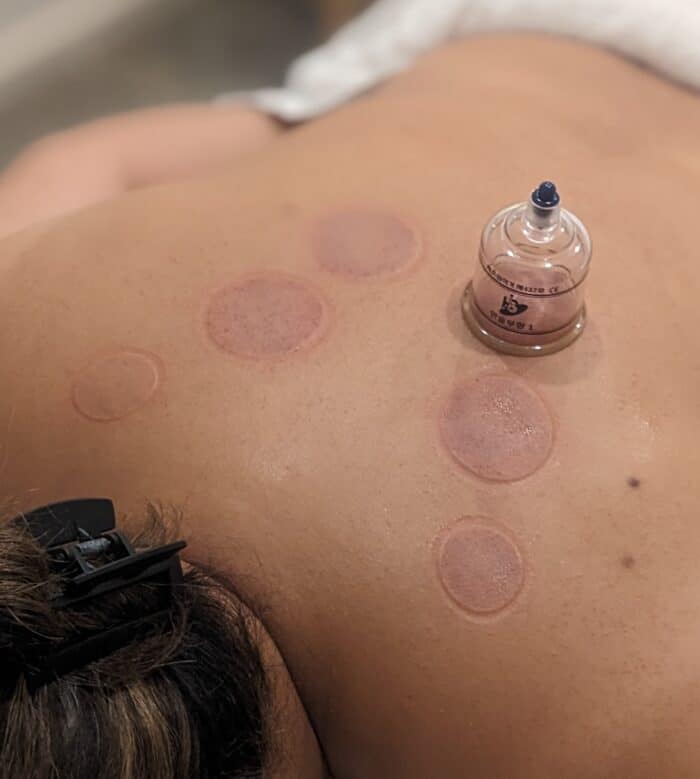
We all have seen the marks left behind after cupping. And yes, it is technically a bruise but there is an important difference. Usually when we sustain a bruise it is through some kind of trauma to the tissue which is why when a bruise appears on the body it can be sore. With a cupping mark there is no trauma done to the tissue so even though you’re left with a mark, they rarely hurt.
What is the difference between glass and plastic cups?
In Myotherapy we generally use plastic vacuum cupping. Plastic cupping uses a handheld pump which will draw air out of the cup creating a strong pull. It is quick and easy and very effective to work on the body. Glass cups also create the same suction, they require a live flame from either a candle or methylated spirits to burn away the oxygen creating a negative pressure vacuum seal which draws the tissue up into the cup.
Because glass cups require live flame it can take little longer to apply. There are added benefits to glass such as the heat from the flame can warm the glass assisting the treatment. Generally, you will see a practitioner using glass cups within a Chinese Medicine treatment as with our lovely Lea here in the clinic. Whether your therapist uses glass or plastic or both in their clinic rest assured you will have a great treatment!
Myotherapy cupping is a fantastic therapeutic modality that has amazing health benefits. If you have any more questions or would like to give it a try talk to our receptionist about booking a Myotherapy treatment today!
Written by Jodie Lasker (Myotherapist)
